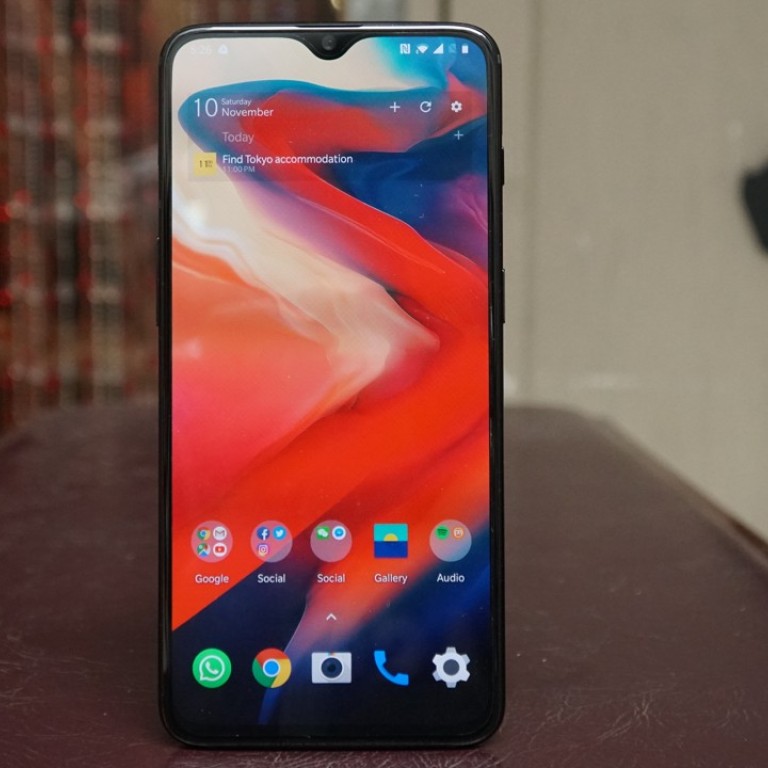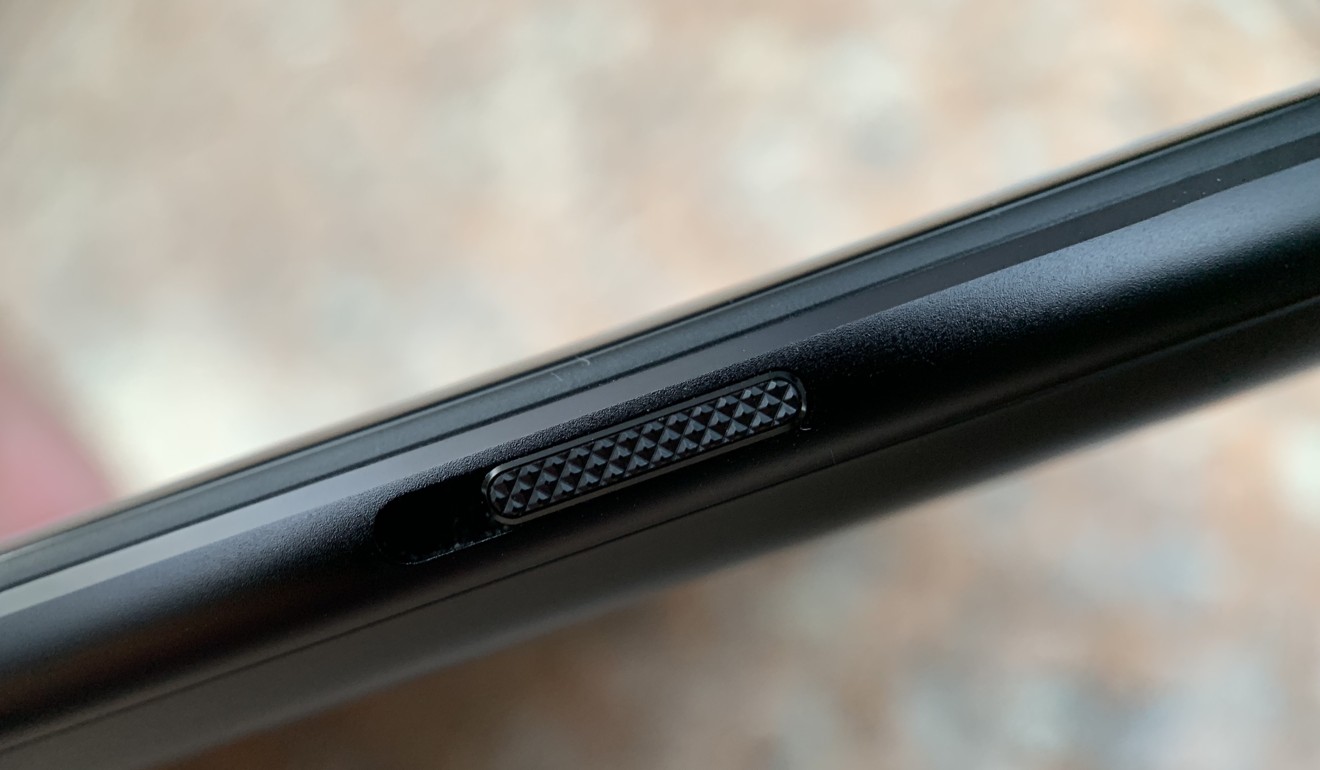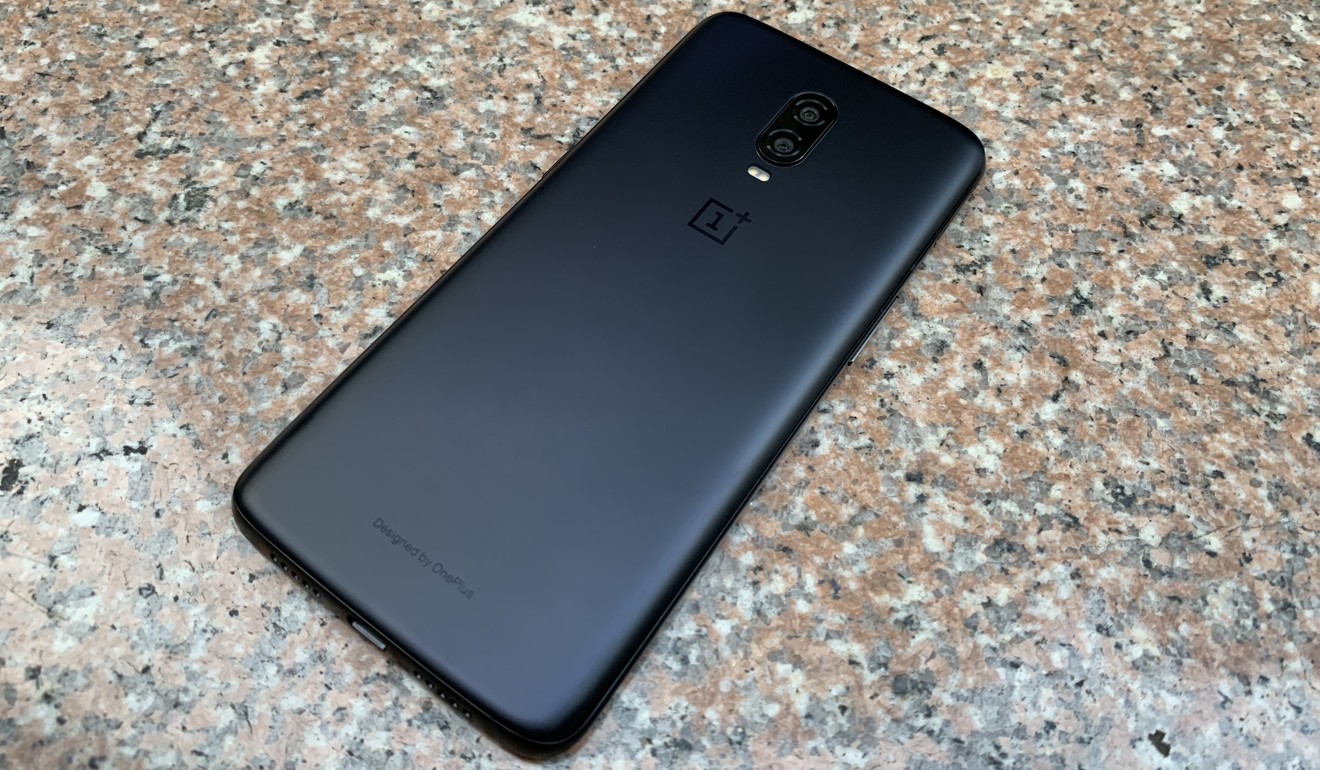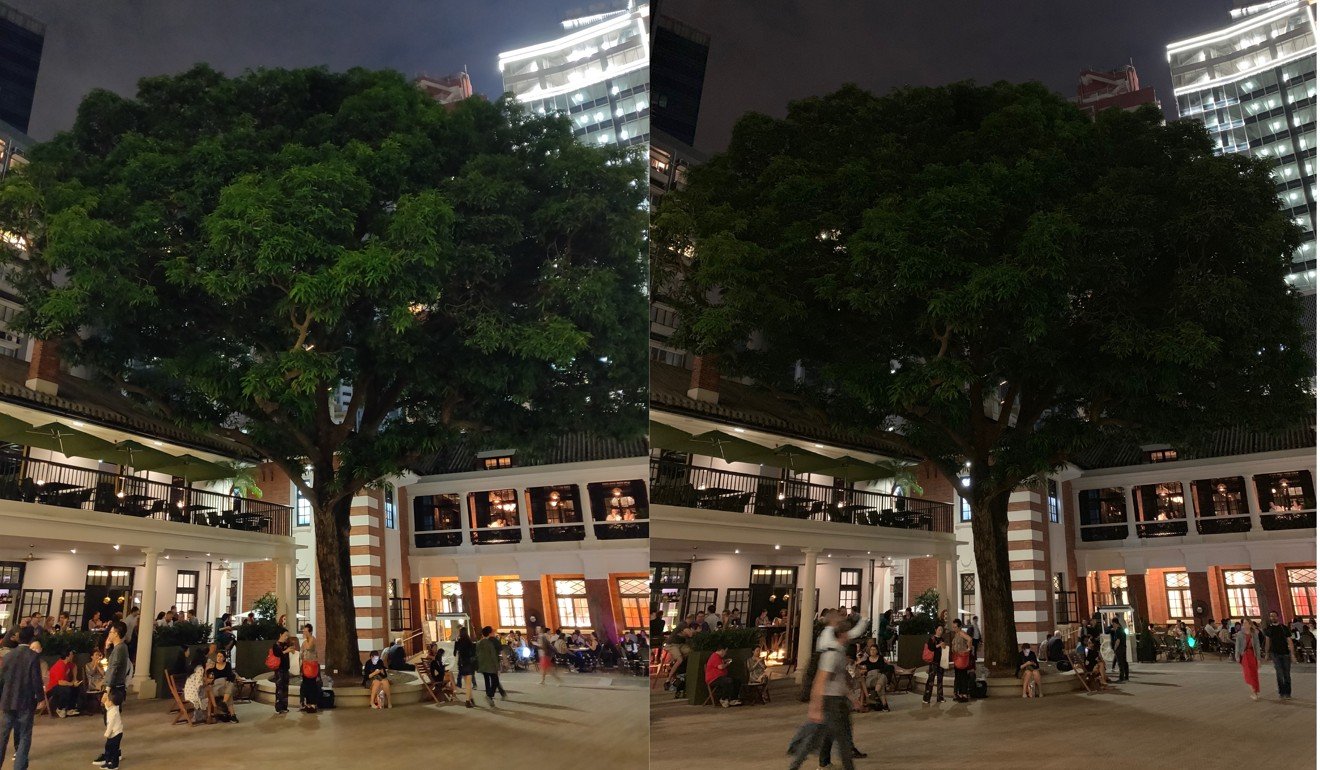
Review | OnePlus 6T full review: probably the best upper mid-range phone you can buy
- Fingerprint scanner under screen, bigger display and more powerful battery make handset an improvement on its already excellent predecessor the OnePlus 6
- However, audio output is still relatively weak, there is no wireless charging and display could be brighter
Smartphones in 2018 seemed to have gone in one of two extreme directions.
Samsung’s crazy new foldable phone? Pah, these guys did it first
The OnePlus 6T is in the latter camp. With the exact same processor, camera hardware, and overall design language as the barely six-month-old 6, the 6T is a very minor upgrade on what was already an excellent handset.

Design and hardware
Here’s what’s new with the 6T. It has a smaller notch than the one on the 6; the display and battery got bumped up to 6.4 inches and 3,700mAh (from 6.3 inches and 3,300mAh); and the fingerprint reader is now embedded underneath the screen instead of residing on the back. That is about it. Everything else is the same: Snapdragon 845 with 8GB of RAM; glass front and back; and a unique-to-Android slider button for toggling between normal, silent or vibrate.
The whole package still feels very premium, and the frosted finish to the “Midnight Black” colour gives it a nice matt finish that is also more resistant to fingerprint smudges.
But the shortcomings of the 6 are still here too: there is only a single bottom-firing speaker grille and audio output is relatively weak; the OLED panel does not get as bright as others; and the phone does not support wireless charging despite the glass back.

Software and features
This is where the OnePlus shines. The company’s Android skin, OxygenOS, has long been my favourite software (this is roughly the general consensus among Western tech media) and the latest version here is as brilliant as ever.
Whether it’s the breadth of customisation options (it’s possible to change the entire colour scheme of the phone’s menus); the useful gesture short cuts (you can control music playback directly from screen-off state, without needing to first wake the display); or thoughtful usability touches (apps in folders show on the bottom of the screen for easier one-hand reach), the software experience is easier and less intrusive to use than anything else out there.
Perhaps more importantly, the OS skin operates on top of the latest version of Android, and everything is buttery smooth.

Performance and battery life
OnePlus phones have always been about speed and the 6T, with ample RAM and lean software optimised to prioritise fluidity, continues the company’s reign of having the fastest-feeling smartphone on the market.
Other top phones are not slow by any means, but everything zips a split second faster on a OnePlus device. Even the in-display fingerprint reader – a relatively new tech which still has some usability shortcomings – seem faster here than on other phones.
The camera hardware here is unchanged from the 6, and in day shots I cannot tell any differences between photos produced by the 6T and the 6. This isn’t necessarily bad news – the 6 was already a capable shooter, opting for slightly exaggerated contrast and lighting that make photos pop.
Phone with a holographic screen, the Hydrogen One, launched by Red
For lowlight photos, OnePlus has introduced its own AI-assisted long exposure mode, named “Nightscape”. Huawei leads the pack on this feature and its implementation is still better in terms of pulling light out of seemingly nowhere.
The night shots on the OnePlus 6T have improved, but only when viewed on the handset. At first glance on a phone screen, they almost always appear “better” than shots taken by the iPhone XS. Only when you zoom in on details on a larger screen do you see that the iPhone’s image retained more details and natural colours.
Still, most people these days take photos for social media, which are then viewed by others on a phone. So perhaps OnePlus has the right idea after all by catering to that group rather than photo purists.
Impressively, the 6T can shoot videos in 4K/60fps – something the top phones from Huawei and Google cannot do. Footage is crisp, but stabilisation takes a big hit if the user is moving. If you can put the 6T on a tripod, 4K/60fps is a big addition for videographers.
The 6T’s larger battery means longer battery life. The 6T lasted an entire day on a single charge in four of the five days I tested the phone, with an average screen-on time of five hours.

Conclusion
For years, OnePlus phones were the undisputed best value in the industry, because everyone else that offered the same power sold their phones at a much higher price, and phones in the same price range usually offered inferior specs.
But Xiaomi and Huawei – perhaps after having found success in the budget and premium space respectively – have ramped up efforts at gunning for that “mid-high” market this year. Xiaomi’s Pocophone, for example, offers the same Snapdragon 845 as the 6T, but is more than US$200 cheaper. Huawei’s Honor brand is selling its Magic 2 with an even more powerful Kirin 980 CPU at almost the exact same price – US$547 – as the 6T.
The OnePlus 6T is a better and more polished phone than both of those offerings, but the competition is getting very tough. OnePlus still has a major edge in North America because its Google-centric software is much preferred there and it managed to secure US carrier support. But in Europe and Southeast Asia, Xiaomi and Honor are biting into OnePlus’ pie.

Dimensions: 157.5mm x 74.8mm x 8.2mm
Weight: 185g
Display: 6.4-inch 1080 x 2340 OLED panel
Battery: 3,700mAh
OS version reviewed: OxygenOS 9.0.5 over Android 9
Processor: Snapdragon 845
Cameras: 16-megapixel f/1.7 sensor with a 20-megapixel f/1.7 sensor; 16-megapixel front-facing camera
Mi Mix 2S first impressions: Xiaomi’s best camera system to date
Memory: 6/8GB of RAM; 128/256 ROM
Colours: Midnight black, mirror black, thunder purple
Price: HK$4,298 (6GB RAM, 128GB ROM); HK$4,498 (8GB RAM, 128GB ROM); HK$4,998 (8GB RAM, 256GB ROM)

